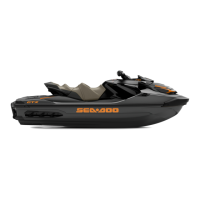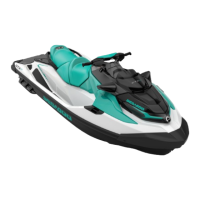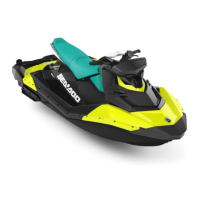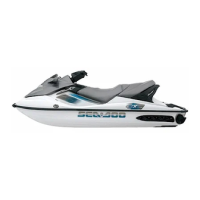Section12ELECTRICALSYSTEM
Subsection 05 (DESS (CARBURETED AND RFI ENGINES))
Self-Diagnostic Mode
It is self-activated when the safety lanyard cap is being installed on the watercraft switch. It gives imme-
diate monitoring. Refer to the following chart.
SIGNAL CAUSE REMEDY
• Safety lanyard is recognized by
the MPEM.
• Engine can be started normally.2 short beeps
(when installing
safety lanyard on watercraft post).
• Good contact between safety
lanyard cap and DESS post.
A
2 seconds beep
every 5 minute
intervals
(RFI models)
• Fuel tank level is low. • Refill.
4 short beeps
every 3 seconds
interval for 2 hours.
• Safety lanyard has been left on its
post without starting engine or after
engine was stopped.
• To prevent battery discharge,
remove the safety lanyard from its
post.
Continuous beep
• Engine overheats
• Refer to COOLING SYSTEM.
• Bad connection between safety
lanyard cap.
• Remove and replace the safety
lanyard on the post until 2 short
beeps are heard to indicate the
system is ready to allow engine
starting.
• Unprogrammed or defective
safety lanyard.
• Use the safety lanyard that
has been programmed for the
watercraft. If it does not work,
check safety lanyard condition with
the programmer. Replace safety
lanyard if reported defective.
• Dried salt water or dirt in safety
lanyard cap.
• Clean safety lanyard cap to
remove dried salt water or dirt .
• Defective DESS post. • Refer to IGNITION SYSTEM for
testing.
1 long beep
(when installing safety
lanyard on watercraft post or when
pressing start/stop button).
• Improper operation of MPEM or
defective wiring harness.
• Refer to INSTRUMENTS AND
ACCESSORIES or ENGINE
MANAGEMENT (RFI).
610 smr2004-Complete Line Up
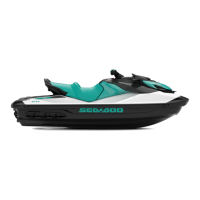
